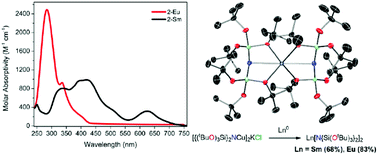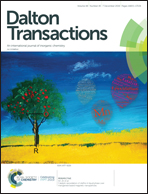Synthesis of homoleptic, divalent lanthanide (Sm, Eu) complexes via oxidative transmetallation†
Abstract
The direct synthesis of neutral, divalent samarium and europium complexes supported by the bulky bis(tris-tert-butoxysilyl)amide (BTTSA) ligand via oxidative transmetallation is reported. Through the use of a copper(I) ligand complex, conventional lanthanide halide starting materials for complex formation are circumvented and the clean formation of divalent complexes is achieved directly from the bulk metal. The structures of the [Ln(BTTSA)2] (Ln = Sm, Eu) complexes are isotypic, presenting divalent lanthanide ions with distorted, six-coordinate geometries.



 Please wait while we load your content...
Please wait while we load your content...
